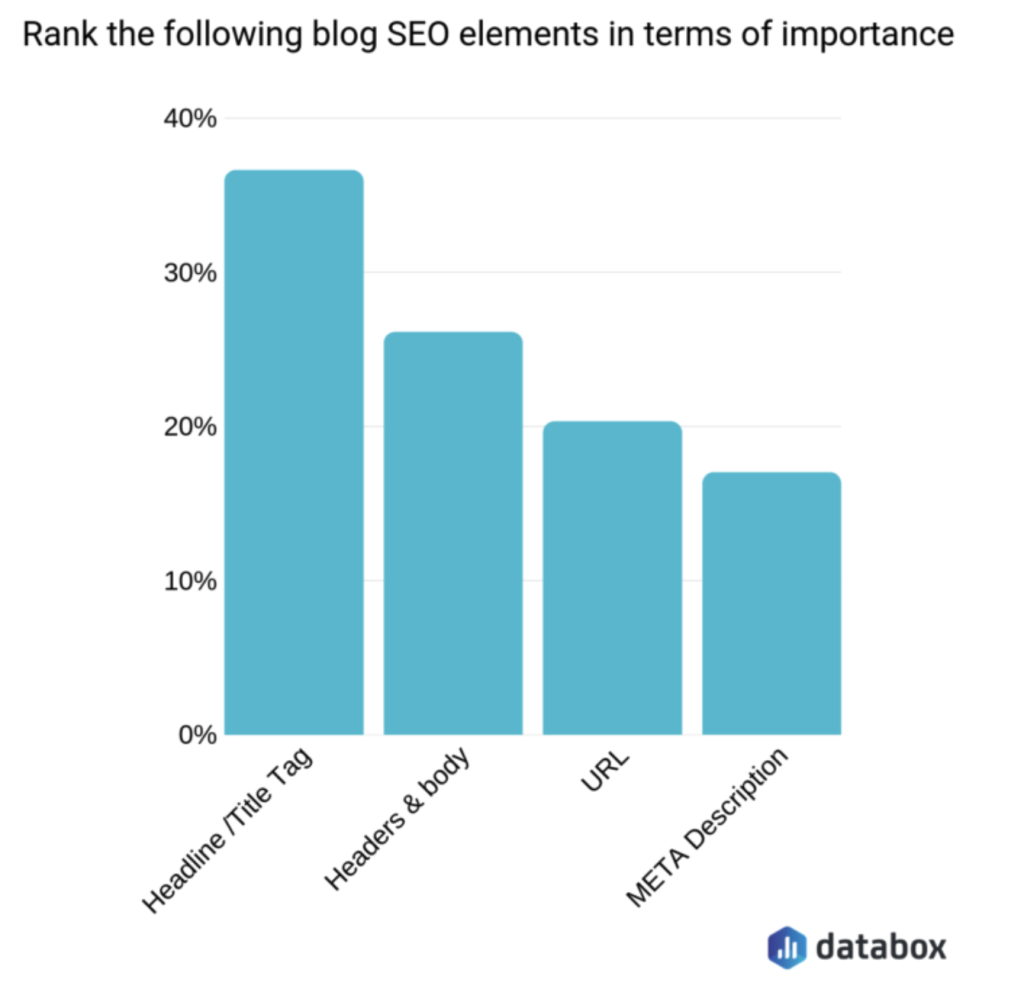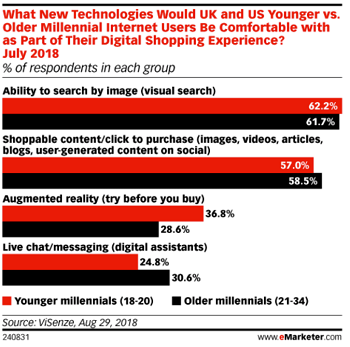37 Eye-opening SEO Statistics To Nail Your 2025 Search Strategy

SEO Statistics for Marketing
- Google currently holds 89.5% of the global search engine market share (StatCounter, June 2025)
- Google now processes over 5 trillion searches per year — around 14 billion per day (Semrush, 2025)
- AI Overviews appear in 13.14% of all U.S. desktop searches (Search Engine Land, March 2025)
- The #1 organic result captures 27.6% of clicks (Backlinko, 2024)
- The top 5 organic results secure nearly 69.1% of clicks, while positions 6–10 get <5% (Backlinko, 2024)
- 70% of marketers say SEO drives more sales than PPC (Databox, 2025)
- SEO can reduce customer‑acquisition costs by 87% compared with paid advertising (Terakeet, 2025)
- 60% of consumers have scanned a QR code they found in online content, making QR codes an increasingly effective engagement channel (Statista, 2025)
- 75% of marketers rate their SEO tactics as “extremely” or “very” effective (HubSpot, 2025)
- The average first‑place Google article contains 1,594 words (Semrush, 2024)
In 2015, as just a wee-young marketer, I helped strategize and implement search engine optimization (SEO) and content strategies that helped take IMPACT’s website traffic from 40,000 to 400,000 in a matter of a few months.
Was this exciting? Absolutely! Was it easy? Not in the slightest.
The reality of the SEO landscape in 2025 is equal parts fascinating and, frankly, intimidating.
As marketers, we know staying on top of Google algorithm updates and SEO best practices is key to positioning our digital content and increasing organic search results — but they tend to change without warning and there really is no finish line.
According to BrightEdge, organic search now drives 53.3% of all website traffic, so big or small, search engine optimization is something your business can’t afford to turn a blind eye to if you want to get in front of new audiences.
But where do you begin?
Keywords, featured snippets, voice search, image search — there are so many different aspects to consider and master.
In this article, I’ll share 37 fresh SEO statistics to help you:
- Understand the current state of search engine optimization in 2025.
- Evaluate the best opportunities for your business and gaps in your strategy.
- Get started with new SEO tactics.
SEO statistics for strategy
Let’s start with a look at strategy.
1. Google currently holds 89.5% of the global search engine market (StatCounter, June 2025)
To win at search engine optimization, you have to play by Google’s rules. Ranking high on Yahoo or Bing will bring visitors to your site, but companies that rank on Google are most likely getting the most business.
Using Google Search Console will help you understand how people are currently getting to you through Google searches.
2. Google processes around 14 billion searches every day (~5 trillion per year) (Semrush, 2025)
Customers are searching… a lot.
In fact, consumers now do as much as 70% of their purchasing research online before they ever get into a sales conversation.
Ranking well in search engines enables your buyers to easily do research on their own while spending time learning about you on your terms.
Prioritizing search engine optimization gives you the power to do what you can to make sure your business appears first during those billions of searches.
3. The #1 organic result captures 27.6% of clicks (Backlinko, 2024)
Sure, your page analytics tools will show you what you’re ranking for on pages 2‑10, but this stat shows that it really is good to be on top.
With more than a quarter of all clicks going to the first organic result, the competitive field is tougher than ever and marketers need to be savvy, creative, and a little bit lucky to gain that prime real estate.
4. Google’s search algorithm uses more than 200 factors to rank websites (Backlinko)
Google remains somewhat mysterious about exactly how they rank, but SEO experts the world over have been making lists (and checking them much more than twice) to pinpoint the magic of SERP ranking.
Backlinko has done a nice job of keeping an up‑to‑date list and it is comprehensive.
Google’s strength can’t be denied in the search engine category. Keeping up with Google algorithm changes ensures you’ll stay agile and can make key changes when they’re needed.
5. 16–20% of all annual Google search queries are brand‑new (Internet Live Stats, 2025)
Competition in search engines is ever‑growing, so you must stay vigilant in your search engine optimization efforts. Just because you rank No. 1 for a term today doesn’t mean it’ll be in the same place next month, let alone next year.
6. 70% of marketers say SEO delivers more sales than PPC (Databox, 2025)
With digital marketing becoming more mature, it’s no surprise that companies are continually getting better at SEO — and seeing more results from SEO efforts than from PPC.
Many of the respondents reported that they see more results (including traffic, leads, and sales) from search engine optimization. Others used ROI as a benchmark to rank SEO over PPC.
Marketers found SEO to be a long‑term strategy, whereas PPC allowed for short‑term bursts.
As one respondent said, “PPC feels like lifting a lead zeppelin. Put enough force (i.e., money) behind it, and traffic will come. But as soon as you stop paying, the traffic stops.”
7. SEO can reduce the cost of customer acquisition by 87% compared to digital advertising (Terakeet, 2025)
Because of its low‑cost barriers, SEO makes getting new customers significantly less expensive than other mediums.
8. 75% of marketers feel their SEO tactics are ‘extremely’ or ‘very’ effective at helping them achieve their marketing goals (HubSpot, 2025)
Marketers are feeling more confident in their SEO efforts than ever before. If you’re not investing in yours, you risk getting left behind by your competitors.
9. The average top‑ranking Google article contains 1,594 words (Semrush, 2024)
How long does good content need to be? Enough to fully answer your buyers’ questions.
But if you want that good content to rank well, it’s best to aim for about the 1,600‑word mark.
The more you write, the better informed your readers will be, the more you can show your transparency and honesty, the higher opportunity you’ll have to link out to other reputable sites, and likely the more backlinks you’ll receive.
As it turns out, backlinks are no joke when it comes to ranking. In fact…
10. The #1 result in Google has an average of 3.8× more backlinks than positions #2‑#10 (Backlinko & Ahrefs)
Clearly, backlinks are closely associated with high rankings.
11. More than 54% of search queries are at least three words long (Moz)
Most searchers aren’t seeking out one‑ and two‑word terms. They’re searching phrases that are three words or longer; these are called long‑tail keywords.
People are looking for specifics, and your content needs to reflect this. Check out the stat below if you’re not convinced…
12. Long‑tail keyword searches have a click‑through rate 3–5% higher than generic searches (Smart Insights)
Long‑tail keywords are the difference between “SEO” and “SEO statistics” and “SEO statistics for 2025.”
See how those last searches are different? There’s unique intent with each of these, and the user expects different, more specific, and more updated content as the keyword gets longer.
If you’re a company with search engine optimization professionals looking to rank for the keyword “SEO strategy,” for example, you could set your sights on the following long‑tail keywords:
- How to create an SEO strategy
- What is an SEO strategy?
- What are the benefits of an SEO strategy?
- How do I get more website traffic?
- How much does an SEO strategy cost?
13. Updating and republishing old blog posts with new content and images can increase organic traffic by as much as 106% (HubSpot)
As we mentioned earlier, there are always new pages showing up in search engines. If you’ve had content that’s been sitting around for a while, historical optimization might just become your new best friend.
By updating and refreshing existing content, you not only get the benefit of getting more miles out of old articles, but you can re‑energize how those oldies but goodies rank.
If you’ve got a strong baseline and were once ranking for keywords well with older articles, this is the perfect tactic to take back for your 2025 strategy.
14. In 2024, 34% of SEO experts said the headline/title tag was the most important on‑page element (Databox)
It’s tempting to spend the bulk of your time crafting the perfect copy for an article and then just want to move on. Because of this, we tend to treat the headline as an afterthought.
That’s a mistake, according to the majority of search engine optimization experts surveyed recently.

Your headline will not only let the search engines know what you’re writing about, but there’s a good chance it will show up across social media feeds, in newsletters, and in all the backlinks you’ll receive.
Your audience will only click on that headline if it’s appealing enough to grab their attention.
Take the time to create multiple (at least three) versions that contain the keyword phrase you want to rank for. Then, workshop your title with coworkers and colleagues.
The time you put into crafting the perfect headline will pay off in traffic and ranking.
Local SEO statistics
While search engines are global, you can’t discount the importance of local SEO.
15. 46% of all searches on Google are for a local business or local service (Search Engine Roundtable)
If your business services a specific area, or has multiple offices or brick‑and‑mortar locations, you should be optimizing your website to get found by people in those areas.
Doing so can help you capture more qualified, urgent, and ready‑to‑buy audiences.
16. 72% of users look for a local business through Google Search, while 51% use Google Maps (BrightLocal, 2025)
When you consider the blog topics your audience wants you to write about, make sure to include a list of “bests.”
Not only are mobile queries on the rise, but so are requests for best lists. Think about how to include similar searches in your own strategy (i.e., “Best commercial flooring options right now,” “Best phone out right now,” “Best investments to make right now,” “Best SEO strategy right now”).
17. The Google Map Pack captures 42% of clicks on local‑intent queries (WhiteSpark, 2025)
If you’re a business that depends on local traffic or has a limited service area, this is key.
Local SEO tactics are important for smaller businesses that might not be blogging or creating a ton of content. Make sure your site is in the appropriate registries and all of your information is up to date.
If your site is not optimized for mobile or local search, it will not show up in mobile search results, and those local customers won’t be visiting your store.
Audience search behavior statistics
How are users searching the web?
18. After searching on a smartphone for something nearby, 76% of people end up visiting the business within one day (Google)
A good reminder to keep your Google Business Profile up to date.
19. 53% of U.S. consumers say they research products using a search engine before deciding whether or not to buy (Google)
If you’re doing inbound marketing — or practicing They Ask, You Answer — this should come as no surprise. Modern buyers turn to the internet to evaluate their options on their own time. When you create search-engine‑optimized content, you will meet them in their search.
Similarly, it should come as no surprise that…
20. 23.6% of U.S. e‑commerce orders originate from organic search (Business Insider)
Though Amazon and direct brand retail sites continue to account for the majority of e‑commerce activity, your business can and should still optimize to be found in search engines and capture this divergent audience.
21. Mobile accounts for 72.7% of all Google searches (Semrush, 2025)
This is a big number, but before you go changing everything to mobile, it’s important to look at the analytics specific to your site. These are global stats and may not represent what’s going on in your neck of the cyber woods.
That said, even though desktop may have the edge for your site, you still need to be mobile-friendly if you want to compete regionally, nationally, and globally.
Also, the range of device sizes means it’s important for your website to be responsive, instead of just having one fixed size for mobile.
22. By 2025, nearly 73% of internet users access the web solely via mobile devices (CNBC)
In 2019, Google rolled out mobile-first indexing, which means that Google will look primarily at the mobile version of a website, versus the traditional desktop version.
This shift makes sense, given that by 2025 it’s forecasted that almost three‑quarters of users will use their mobile device to access the web. This means prioritizing your site’s mobile experience is more important than ever. Use Google’s free Mobile-Friendly test to see how your website performs on mobile.
23. Only 0.78% of Google searchers click through to the second page of results (Backlinko)
It may seem obvious that the click rate would drop on the second page of Google’s search results, but the drop is dramatic. Less than 1% of Google searchers will venture to the second page to find what they are looking for.
Alternatively…
24. The first five organic results account for 69.1% of all clicks (Backlinko, 2024)
It may seem obvious that the click rate would drop on the second page of Google’s search results, but the drop is dramatic. Less than 1% of Google searchers will venture to the second page to find what they are looking for.
Alternatively…
25. The No. 1 result generates a typical click‑through rate of 27.6% (Backlinko, 2024)
This makes it even more important to take the key actions needed to optimize your content to rank on the first page.
and…
Voice search statistics
Next, let’s look at voice search.
27. 35% of people aged 12 and over in the U.S. already own at least one smart speaker in 2025 (Source: RAB/Edison Research)
If you weren’t thinking of optimizing your content for voice search before, you absolutely should now. Smart-speaker devices like Amazon Echo and Google Nest have become everyday household tech.
Voice searches also perform better with more conversational phrases. Try identifying keyword phrases that would be used in regular conversation, versus the short-form way people may type into Google.
28. Roughly 20.5 % of internet users worldwide actively use voice search in 2025 (Source: DemandSage)
In fact…
29. Voice queries now make up 20 %+ of all searches performed inside Google apps (Source: Google/Yaguara)
This is a huge slice of activity on the world’s dominant search engine — and a valuable opportunity to capture a fast-growing audience.
30. The average Google voice-search result page still contains about 2,312 words (Backlinko)
Long-form content continues to rule the roost for voice search. Google tends to source spoken answers from articles that clear the 2,000-word mark.
Tempted to keep your stories short so you don’t scare off hurried readers? You’re probably doing more harm than good.
That being said…
31. The spoken answers themselves contain only 29 words on average (Backlinko)
While longer articles help you get selected, the answers Google actually reads out are concise. Keep definitions and simple explanations tight and crystal-clear.
32. Over 80 % of Google Assistant answers come from one of the top 3 desktop ranking pages (DemandSage)
In fact…
33. 40.7 % of voice-search answers are pulled from a Featured Snippet (Backlinko)
Featured snippets have been around since 2014, but their dominance in voice search keeps growing. As you create articles to gain SEO traction, write with a snippet in mind.
34. “Near me” and other local intents account for 76 % of voice searches on mobile (DemandSage)
No surprise, given that most voice searches happen at home, in the car, or on the go.
Image and video search statistics
Lastly, let’s dive into image and video searches.
35. Image packs appear on 55.62 % of standard Google SERPs in the U.S. (Semrush Sensor)
With the ever-rising reliance on Pinterest, Instagram, Google Lens and other visual platforms, searchers increasingly want results they can see at a glance.
36. Video is still 50× more likely to earn organic ranking than plain-text results (Forrester Research)
Less competition and rich-media SERP features make video one of the easiest ways to break onto page 1.
37. Google Lens now powers 20 billion+ visual searches every month, and 1 in 4 of those show commercial intent (Think with Google, 2025)
Visual search isn’t just novelty — it’s purchase-driven. If you’re not optimizing images with schema markup and high-quality metadata, you’re leaving revenue on the table.

How should these SEO statistics shape your 2025 strategy?
There’s a lot to consider when developing an SEO strategy, especially when so much changes year to year. Based on the statistics above, keep these priorities front-of-mind in 2025:
- Double-down on optimizing for Google — including AI Overviews, Featured Snippets, and voice answers.
- Invest in long-form, authority-building content (2k words+) while surfacing concise answers high on the page.
- If you serve a local audience, lean into local SEO and conversational, voice-friendly phrasing.
- Use high-quality images, video, and structured data to capture visual- and video-centric SERP features — especially for Gen Z shoppers.
Remember: whatever tactics you implement, your ultimate goal is to become the most trusted teacher in your space — answering buyers’ real questions with honesty, clarity, and depth.





